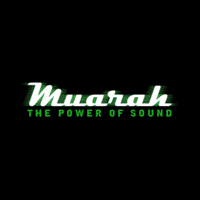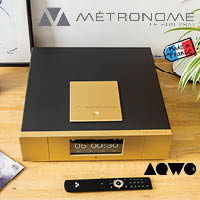PS Audio Stellar Strata Integrated Amplifier
Early in my audiophile journey I believed separate components were the correct way to assemble a HiFi system. Back then I was after sonic superiority but also admittedly seeking serious audiophile credibility. My first stable system consisted of almost a dozen boxes including sources and speakers. Naturally, this phase occurred before I was married with kids, when my listening habits were dictated purely by my whims and when my living space was exclusively mine.
Some gradual realizations have led me to the component under review here, the PS Audio Stellar Strata Integrated Amplifier ($2999).
The advantages of separates in terms of sound quality and convenient modular upgradability are legitimate, but isolating electronics into a chassis with a single function is not the only way to achieve sonic greatness. Excellent design and engineering can coax great sound from virtually any form factor. More importantly, the practical usability of a system is as critical to musical enjoyment as its absolute performance. At least at this point in my hectic life a system will only provide frequent musical bliss if its design facilitates frequent listening.
During residency in my system, the Stellar Strata enhanced my music enjoyment in multiple ways. First, having a clean and simple system built around the unit was a pleasure, both as an impulsive audiophile and as a reviewer. Second, the built-in streamer helped take my discovery of new music to the next level. And finally, the sound itself seemed to suit every musical occasion perfectly, from casual background tunes to critical listening in the sweet spot.
Design & Build
The Strata is handsome and unpretentious in appearance with a form that closely follows its function. Most of the digital focused unit’s features are accessed through a menu on the display screen. Only the essential physical controls remain on the front panel: a power button that doubles as the PS Audio logo, a nearly camouflaged input selector button and the volume knob. The result is an elegant component reminiscent of a more minimal purist piece. It is photogenic but it looks even better in person. The textured aluminum body and volume knob are painted with a custom coating formulated with a wax which makes the surface impervious to finger prints. The metalwork has a luxurious look and feel that isn’t fully captured in the high resolution product photos. As for the construction, this Colorado built unit is solid. I laughed when pulling it out of the package - it’s that heavy. Turns out the mass comes from all that clever metalwork - it’s almost 3 millimeters thick.
The PS Audio Stellar Strata Integrated Amplifier ($2999) also comes in black.
Features
Most of the key circuitry in the Strata is carried over from the PS Audio Stellar Gain Cell DAC released a few years ago. Gain Cell refers to the Class A preamp in which the volume digitally controls gain in the analog domain, eliminating the need for a potentiometer or resistor ladder in the signal path. The DAC section uses PS Audio’s Digital Lens technology, which reclocks all incoming signals before they are processed by the 32-bit DAC chip. The headphone section is a dedicated Class A circuit capable of 3.25 watts into 16 ohms and 300 mW into 300 ohms. A Class D module sourced from IcePower supplies loudspeakers with a hearty 100 watts into 8 ohms and 200 watts into 4 ohms.
I happen to appreciate that the Strata does not include a phono stage. Maybe it’s my lingering separates bias but it’s nice to have the freedom to choose a phono stage, especially when excellent options are becoming so affordable. There is one omission from the feature set which is more of a missed opportunity for PS Audio. High resolution be damned, a Bluetooth receiver should be included on any integrated amplifier essentially containing a computer. This would have made the Stellar Strata a true one box solution. Not everyone listens to vinyl, but most streaming from a tablet or phone could find a use for Bluetooth.
In Use
Setup entails connecting AC power and speaker cables then connecting the Stellar Strata to a WiFi network. The internal streamer renders additional sources optional. Entering a WiFi password with the volume knob was a bit tedious but rest assured it’s a one time deal—the streamer stayed locked on my WiFi signal for months straight.
Where the streamer could use some help is the app that drives it. It is certainly easy to use but it’s basic by today’s standards. I would have liked more customization options for the user interface like more sorting and filtering options and flexibility of the size of album cover thumbnails. Access to more functionality of the chosen streaming service accessed through the app such as the ability to add music to the library would also be a great improvement.
A good way to sidestep the challenge of developing an app in house would be to rely on ROON. This could have bumped the retail price over the key $3000 mark so surely trade offs were made in the development process. Just a consideration for ROON devotees.
Beyond the app, interaction with the Stellar Strata was extremely pleasant. The remote gets the job done and the volume knob is fantastic. Just enough resistance with nice detents and a noticeably linear control.
I’m not sure what ‘Straming’ is, but the app allows ‘streaming’. A rare Apple typo.
Review System
Electronics: Parasound HCA-750A, Parasound P/LD-1100, iFi ZEN DAC Signature, iFi ZEN CAN Signature 6XX, Xiang Sheng DAC-01A
Speakers: Usher Audio SD-500, Wharfedale Diamond 10.2
Headphones: Sennheiser HD650, Beyerdynamic DT770 Pro 250 Ohm
Sources: Macbook Air, AmazonHD, 16-bit & 24-bit FLAC
Sound
I spent a substantial portion of my time with the Stellar Strata streaming and enjoying its built-in DAC. After a while I noticed a consistency to the sound from the streamer regardless of the resolution or actual quality of the recordings. Don’t misinterpret this as the digital ‘sameness’ that characterizes many entry level systems, that wasn’t the case here. Track after track, album after album, I got the impression it was working to show every recording in its best light. I did not once skip over an album because I was in the mood for a better recording. Fine performance for a feature that I expected to use mostly for discovering new music and casual listening.
An unsurprising but enjoyable comparison was running both the analog and coaxial outputs of my Yamaha DVD-S1700 disc player into the PS Audio simultaneously. My beloved Yamaha is the component I’ve had in my system the longest so I know it well. I was in a nostalgic mood when browsing for CDs to compare the analog and coax and streaming performance. I listened extensively to Ohio (Great Speckled Dog), the 2003 double disc set by husband and wife duo Over The Rhine. The album is a blend of country, folk and rock with singer Karen Bergquist shining a unique light on all kinds of deep personal themes with her perfectly smoky voice. It’s been repressed on vinyl but my research indicated the album has not been remastered. I relied on the assumption that the version available on streaming services came from the same master as my CD. Ohio is impeccably produced and sounded great through the analog outputs of the Yamaha, just as it always has. But switching to coax instantly via the remote was a revelation. At first I thought the Stellar Strata’s DAC must somehow add more gain than analog inputs. Even after playing around with volume matching the sound was bigger, bolder and warmer. It’s not that the Yamaha was missing anything outright, the Stellar Strata’s DAC just created a sound with real meat on the bones. Streaming the album gave the same overall presentation as playing the CD through the DAC. Slightly less realism, perhaps, but close enough that without an A/B comparison they would be indistinguishable. Why exactly they sounded different is beyond me but the experiment was a victory for both the DAC and streamer.
Spinning vinyl demonstrated the consistency of the streamer was in fact a trait of the streamer and not of the analog preamp or power amp sections. When spinning vinyl on my Pro-Ject Debut Carbon with the iFi ZEN Phono doing equalization duty the various quality and character of every recording was immediately apparent through the Stellar Strata. This signal chain was perhaps the most transparent configuration in my system during the review period. It didn’t do any favors for lower quality recordings but the good stuff was superb.
I love some dollar bin gospel for the rare weekend afternoon relaxing around the house. On Book of Favorite Hymns (Capitol, 1961), Tennessee Ernie Ford’s deep baritone might have been better served by a vintage tube amp and some JBLs. Jumping forward a few years to Emmylou Harris’s, Angel Band (Warner Bros, 1984), this disc has some issues with distortion on vocal peaks and this was obvious with the Stellar Strata.
Now, dropping the needle on any fresh audiophile pressing was consistently an exceptional experience. I had the Tone Poet reissue of Donald Byrd’s 1961 set, Chant (Blue Note) in heavy rotation. The speakers disappeared and that vibrant Rudy Van Gelder sound filled my room with a crazy soundstage, pinpoint imaging and squeaky clean tones. The Stellar Strata surely amplified every last drop of music the stylus could find in the grooves.
Dynamic performance of the power amp was great, as expected for a clean class D circuit. There was one unexpected way the Stellar made intense orchestral works much more enjoyable: the volume control. With other systems I’ve had trouble dialing in the best listening level for records with a massive dynamic range, particularly classical music. Not so with the Stellar. The linear character volume control made it easy to find a level that revealed all the quiet nuances of a piece without scaring my neighbors during crescendos.
After growing accustomed to the unit for several weeks I took advantage of the RCA preamp outputs to remove the class D power amp from the signal path and compare it to my Parasound HCA-750. The result was a cohesive sound but it certainly wasn’t as compelling as the complete Stellar Strata package. The detail was all there but the soundstage width tightened up and highs were a touch edgier, reinforcing the notion that there is serious synergy between the sections designed into the PS Audio.
While I had the iFi ZEN Signature Set in for review I was able to compare the combination to the Stellar Strata using my laptop as a source. When listening with the Sennheiser HD650 a clear theme developed. The ZEN Signature Set has an airy, spacious and fun sound which complimented the HD650’s intimate soundstage. The Stellar Strata was quite different. The sound was bold, rich and more ‘inside my head.’ The tone and level of detail was spectacular but it did not have the space that the ZEN could create. With the HD650 it was almost too much of a good thing, but still great for analytical listening. In general the headphone amp was impressive and it should work wonders with a headphone that throws a large soundstage.
My overall impression of the Stellar Strata’s sound is something like a big friendly bear hug of sound, powerful, warm and tons of fun. And it really opens up when you feed it the good stuff. Very well rounded. While the headphone amp gave a slightly different presentation than the power amp it was no less impressive, and should not be overlooked by head-fi enthusiasts.
Speaker Matching
The two speakers I had on hand to run with the Stellar Strata were both two-way standmounts, albeit with different personalities. The easy going Wharfedale Diamond 10.2 was a fine match although in my new house, with a nicely damped room, the PS Audio needed something with more resolution. The Usher SD-500, with its diamond tweeter creating a sparkling top end, was just right. The Strata loved the Usher SD-500. After experiencing the Stellar Strata in two different spaces, I determined that matching a speaker to the room was more critical to system performance than matching a speaker to the amp. I suspect that it would pair well with a wide range of speakers. My takeaway is that a lively speaker would be ideal if it works in the listening space.
Conclusion
As an audiophile with a small arsenal of gear, at first I did not pay much attention to PS Audio’s design mantra for the Stellar Strata, ‘Just Add Speakers.’ When I moved into a new house during the review period I had to reassemble and organize a system in a new space quickly. For weeks my system was just the Stellar Strata and speakers. As the Grateful Dead used to sing, ‘the music never stopped.’ And I became sold on the one box solution.
The Stellar Strata ($2999) would make a damn fine centerpiece of an unpretentious HiFi system supporting any number of sources. It’s immensely practical and its performance is consistently lovable. Most integrated amps I’ve dealt with were based on a traditional power amp with every other circuit layered in. Building an integrated circuit around a high tech DAC and preamp is refreshly different. The DAC, preamp and headphone amp can stand on their own but the entire system is incredibly well sorted. The result is a component that is easy going enough to play music all day long and talented enough to shine when fed fine source material. Highly recommended.
Further information: PS Audio





























